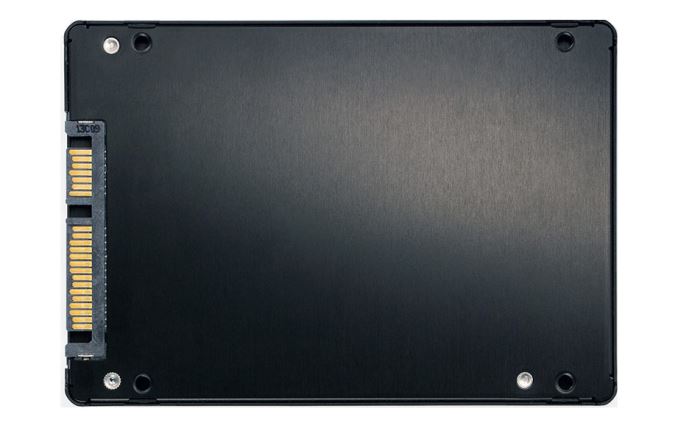
Since the November edition of our SSD guide, SSD prices have shifted downward a bit and several new value SSDs have hit the market. Some of the newest models are still priced at or near MSRP, but will probably drop down to competitive prices soon. The low-end segment is shifting to 15-16nm TLC that does no favors for performance or durability but does bring some improvements to price and power consumption. In the meantime, we’re waiting for new 3D NAND and new PCIe SSD controllers to hit the market and really shake things up.
Many SSD manufacturers have been predicting that the 120-128GB class of SSDs will reach price parity with hard drives this year. If they do, it probably won’t matter. As higher capacity 3D NAND rolls out and pushes price per GB down, 128GB drives face a dilemma: use the newer and more cost-effective flash while losing performance due to a reduction in the number of dies to spread operations across, or stick with lower capacity dies (made on an inferior process) to retain better performance through a larger number of chips. Samsung’s new 750 EVO chooses the latter option by adopting 16nm planar TLC even as Samsung’s third-generation 3D NAND is about to hit the market.
As always, the prices shown are merely a snapshot at the time of writing. We make no attempt to predict when or where the best discounts will be. Instead, this guide should be treated as a baseline against which deals can be compared. For drives not mentioned in this guide, our SSD Bench database can provide performance information and comparisons.
Performance & Enthusiast SATA drives: Samsung 850 Pro and SanDisk Extreme Pro
The only things changing in the high-end segment of the SATA SSD market are the prices. The Samsung 850 Pro and SanDisk Extreme Pro are still two of the best SATA drives on the market, with no successors or new competitors. The Samsung 850 Pro is overall a bit faster, has a higher endurance rating and has hardware encryption support. The Samsung 850 Pro has continued to put price pressure on the SanDisk Extreme Pro, and they are now even at the 240/256GB class, making the Samsung drive the clear choice. Samsung also has the advantage of offering a 2TB model that has come down significantly in price, and a 4TB version will be showing up soon as Samsung moves to their third generation V-NAND that doubles the capacity per die.
Buy Samsung 850 Pro (512GB) on Amazon.com
| 240/256GB | 480/512GB | 960/1024GB | 2TB | |
| Samsung 850 Pro | $116.97 (46¢/GB) | $218.70 (43¢/GB) | $416.49 (41¢/GB) | $824.49 (40¢/GB) |
| SanDisk Extreme Pro | $109.99 (46¢/GB) | $189.99 (40¢/GB) | $347.22 (36¢/GB) |
Value & Mainstream: Mushkin Reactor, Crucial BX100, PNY CS2211
The value segment of the market is flooded with models based on Phison’s S10 controller, with most drives using either Toshiba’s A19nm flash or their 15nm flash. Many other value models are still around and well-priced, and Samsung’s brand-new 750 EVO is a new non-Phison drive. Out of the current crop of budget TLC drives, Phison-based drives like PNY’s CS1311 are better performers than drives like the Crucial BX200 and ADATA SP550 using Silicon Motion’s SM2256 controller. That said, we have a hard time justifying putting any of them on our recommended list because MLC drives with substantially better performance are only marginally more expensive (typically $10-20 extra).
The best deal in this market segment is obviously Mushkin’s 1TB Reactor. At $0.23/GB it’s priced to beat most TLC drives and is $20 cheaper than it was in November, but the Reactor uses MLC and thus has significant performance and power efficiency advantages over low-end TLC drives. The other capacities of the Reactor are currently priced higher than they were in November. The Crucial BX100 seems to still be available and the 250GB model is attractively priced, so it stays in the recommendations for another round. Both the Mushkin Reactor and the Crucial BX100 use the Silicon Motion SM2246EN controller, the most power-efficient SSD controller we’ve tested.
The PNY CS2211 pairs Phison’s S10 controller with MLC NAND and manages to bump the OCZ ARC 100 off the recommended list by offering slightly better throughput at a slightly better price and with a longer warranty.
I’ve also included the Samsung 850 EVO, the one TLC drive that can actually compete against MLC drives on performance and power. At the moment the 500GB model offers a reasonable performance increase for the extra price, but the other capacities are too expensive for what they offer.
Buy PNY CS2211 (480GB) on Amazon.com
| 240/250/256GB | 480/500/512GB | 960/1024GB | 2TB | |
| Crucial BX100 | $69.99 (28¢/GB) | $199.99 (40¢/GB) | $418.99 (41¢/GB) | |
| Mushkin Reactor | $82.99 (32¢/GB) | $164.99 (32¢/GB) | $229.99 (23¢/GB) | |
| PNY CS2211 | $69.99 (28¢/GB) | $129.99 (27¢/GB) | ||
| Samsung 850 EVO | $87.88 (35¢/GB) | $142.57 (29¢/GB) | $294.99 (29¢/GB) | $639.99 (32¢/GB) |
Standard & M.2 PCIe: Samsung 950 Pro and Samsung SM951 (AHCI)
New PCIe drives based on controllers from Phison and Marvell are coming soon, but they haven’t hit the market yet. That leaves Samsung and Intel as the only vendors offering PCIe 3.0 NVMe drives in the consumer space. Intel’s SSD 750 is based on its enterprise SSD lineup and is only available in PCIe x4 add-in card or 2.5″ U.2 form factor, while Samsung’s consumer PCIe drives all use the M.2 2280 form factor.
The price of the Samsung 950 Pro has fallen slightly since the November edition of this guide, and it continues to be one of the most affordable PCIe drives. It’s the clear leader for real-world performance on client workloads, and with the addition of a heatsink it tops the charts for most synthetic benchmarks as well. It’s the easiest recommendation in this guide. Micro Center has been selling the 512GB model for under $300 all month, almost $30 less than the going rate at Newegg and Amazon. That’s cheap enough that buying a 950 Pro 512GB and a PCIe x4 to M.2 adapter with a heatsink will still be cheaper than the 400GB Intel SSD 750.
For users who don’t have systems capable of booting from an NVMe drive, we recommend the AHCI variant of the Samsung SM951. As an OEM drive you won’t get a warranty from Samsung and it isn’t supported by their SSD Magician software, but the price and performance are both reasonably close to the 950 Pro. We’ve found that its idle power consumption is better than the 950 Pro, which makes it a good upgrade choice for notebooks that shipped with a lesser PCIe M.2 drive.
Buy Samsung 950 Pro (512GB) on Amazon.com
| 256GB | 512GB | |
| Samsung 950 Pro | $181.99 (71¢/GB) | $297.49 (58¢/GB) |
| Samsung SM951 (AHCI) | $189.85 (74¢/GB) | $319.99 (62¢/GB) |
mSATA and M.2 SATA: Samsung 850 EVO and Crucial MX200
Selection is limited for these smaller form factors, and the drives carry a premium. The Samsung 850 EVO and Crucial MX200 trade places depending on the benchmark and capacity, with the only constants being that the 850 EVO has lower idle power consumption and the MX200 has better steady-state random write performance. On average, the 850 EVO performs a bit better, but it’s a tough generalization to make. We haven’t benchmarked the mSATA or M.2 versions of the MX200, but performance should be mostly the same as the 2.5″ versions, except that the small form factors have SLC caching enabled on all capacities. The 850 EVO and its predecessor 840 EVO are the only 1TB mSATA drives, and a 1TB M.2 version of the 850 EVO is due soon.
Buy Crucial MX200 mSATA (500GB) on Amazon.com
| 250GB | 500GB | 1TB | |
| Crucial MX200 mSATA | $79.99 (32¢/GB) | $154.99 (31¢/GB) | |
| Samsung 850 EVO mSATA | $89.95 (36¢/GB) | $157.72 (32¢/GB) | $300.99 (30¢/GB) |
| Crucial MX200 M.2 | $96.88 (39¢/GB) | $154.99 (31¢/GB) | |
| Samsung 850 EVO M.2 | $89.99 (36¢/GB) | $157.99 (32¢/GB) |
Source: anandtech.com









































